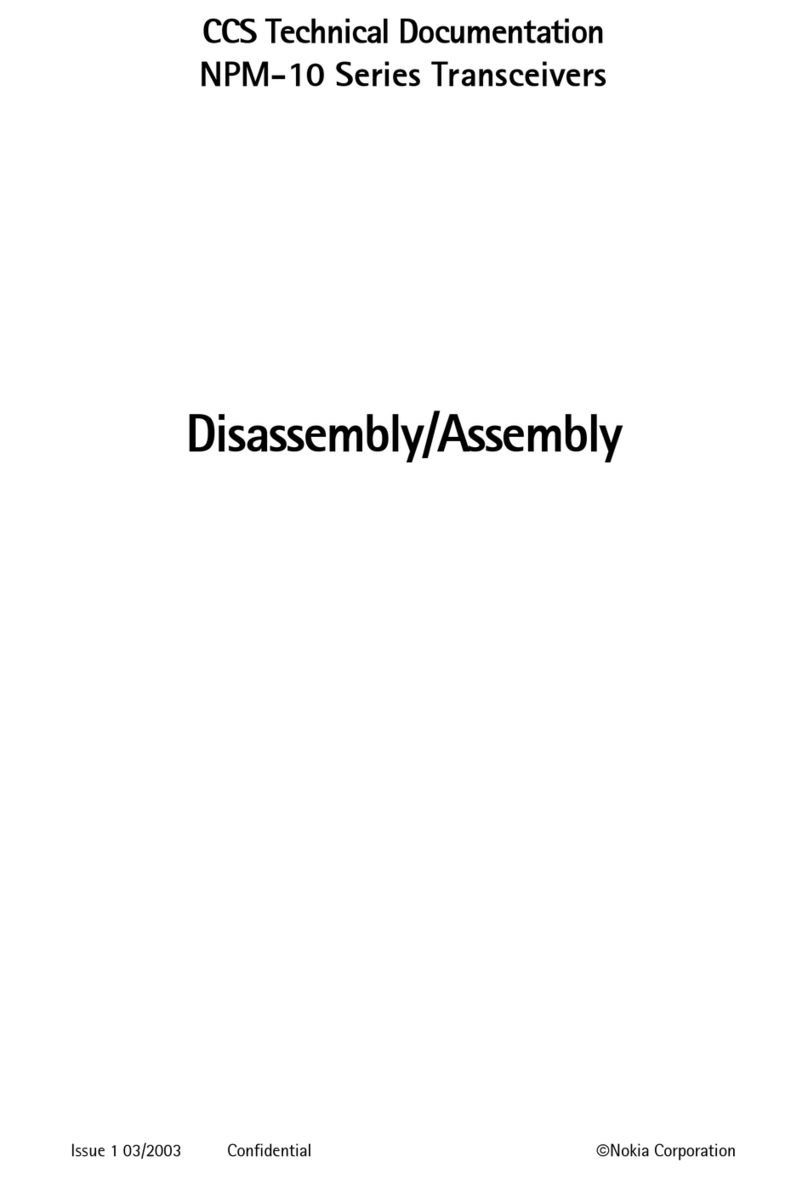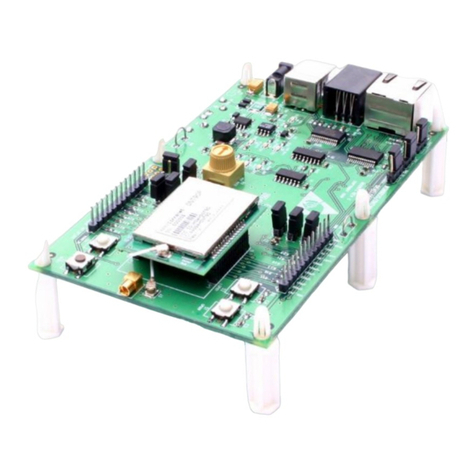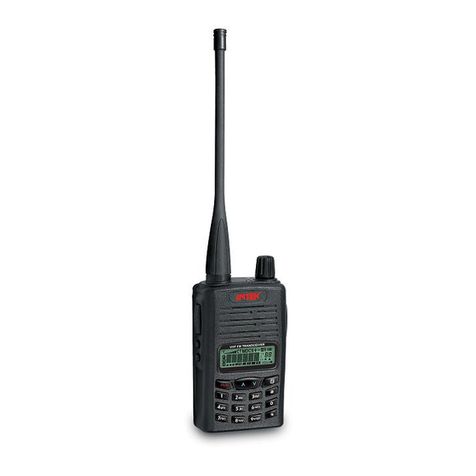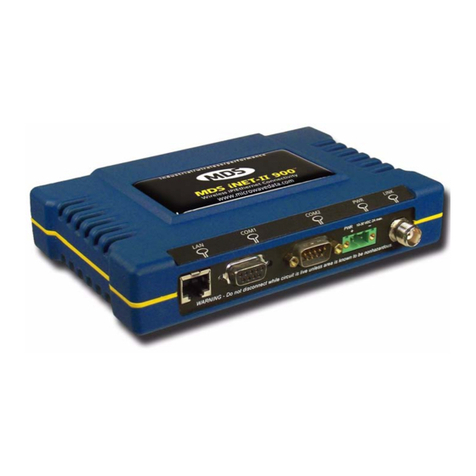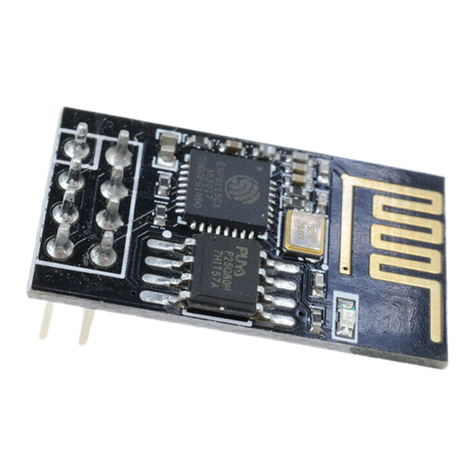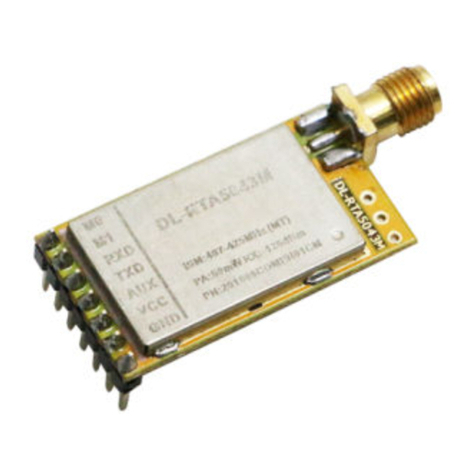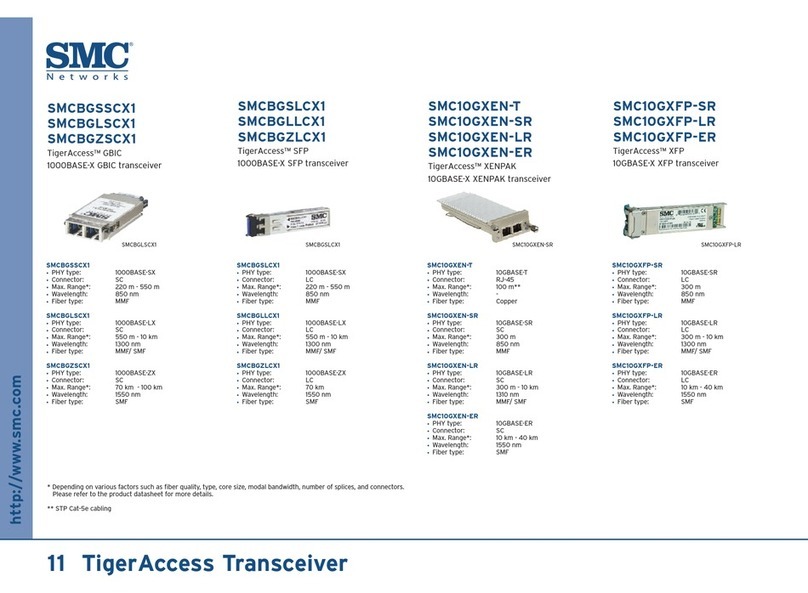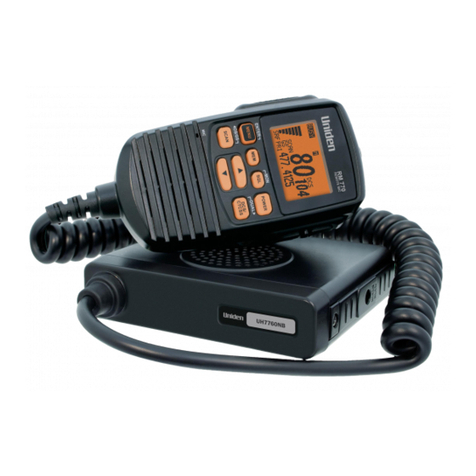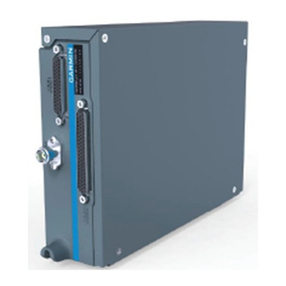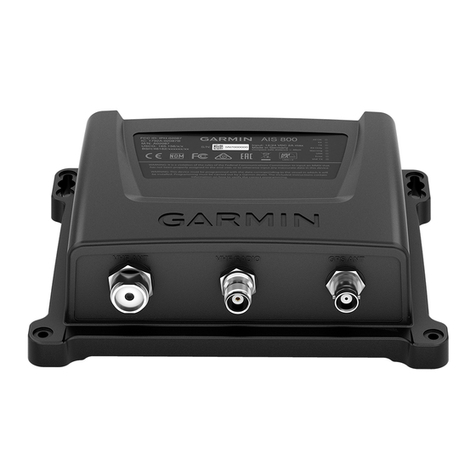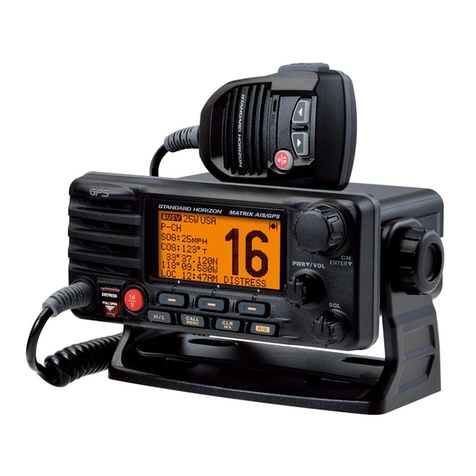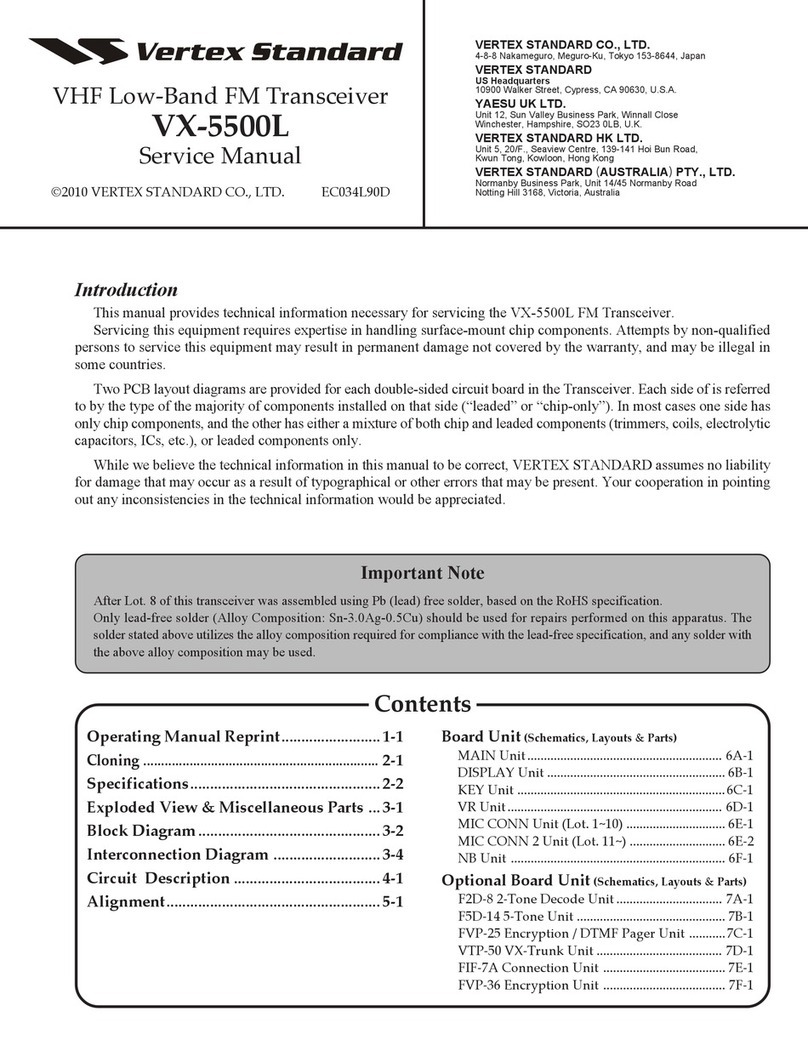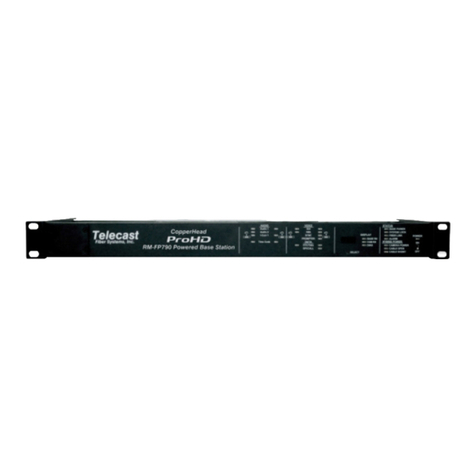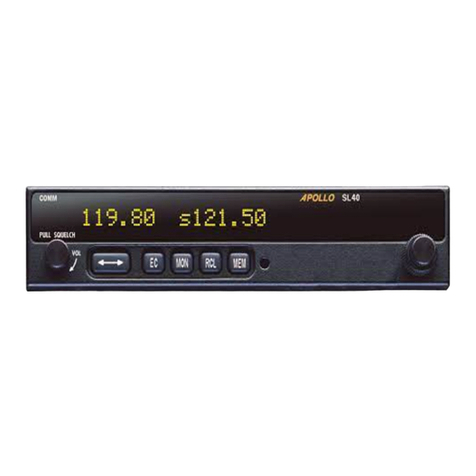Miller Edge MGL-TX20 User manual

2-1. Mount the Receiver inside the operator cover.
2-2. Attach the antenna to the Receiver. An extension
cable will be required if the operator cover is
metal. Ideally, antenna should be vertical and in
line-of-sight of the Transmitter(s).
2-3. Connect power (12-24 VAC/DC) to the terminals
marked POWER (not polarity sensitive).
Determine which monitored interface your
operator uses. Connect the COM and the
correct output connections (P/N.C., 10K) to your
operator. The Output Select dip switch 1 is
set to “R” for all operator’s requiring either a N.C.
or a 10K input, or set to “P” for operator’s that
require a pulsed input. Switch 2 has no function.
2-4. Apply power to the Receiver. Observe that the
green and yellow LEDs are on. The Channel 1
red LED will blink, and the Channel 2 LED will be
on solid. After 15 seconds, the Channel 2 LED will
go out, unless there is a Transmitter associated
with it. If the yellow LED is blinking randomly, at
least one Transmitter has been Learned and is
working.
P.O. Box 159 • West Grove, PA 19390 • 800-220-3343 • 610-869-4422 • Fax: 610-869-4423 • www.milleredge.com
6809 South Harl Avenue, Suite A • Tempe, AZ 85283 • 800-887-3343 • 480-755-3565 • Fax: 480-755-3558
MGL-K20_Inst_20160815
Model: MGL-K20
INSTALLATION INSTRUCTIONS
IMPORTANT:
READ AND UNDERSTAND ALL INSTRUCTIONS BEFORE BEGINNING INSTALLATION
Kit Contents:
1. MGL-TX20 Transmitter unit
2. MGL-RX20 Receiver unit
3. Receiver antenna
4. (2) AA lithium batteries
5. (4) #6 pan head transmitter mounting screws
1-Parts List
PART NUMBER
2-Install R c iv r
The Monitored Gate Link (MGL) transmitter/receiver system is intended to provide a wireless connection between a monitored
safety edge and a motorized operator that controls the associated gate. MGL meets the 2016 UL 325 requirements for
monitored devices and has been certified as a UL 325 recognized component. It is designed for use on operators that comply with
2016 UL 325 using a T2 terminated edge sensor.
Required:
1. 1/8” flat blade screwdriver
2. 1/4” flat blade screwdriver
3. 10K (T2/blue band) terminated Sensing Edge
Recommended:
• VOM for test purposes
• Mounting screws as required for receiver
ANTENNAMOUNTING
TABS (2)
RECEIVER
ENCLOSURE
TERMINAL
DIAGRAM

3-L arn Mod
3-1. Prior to mounting the Transmitter(s), remove the
cover(s) and insert the batteries, noting their polarity.
The green LED should blink once every second. Press
the Test button, next to the green LED, and note that
the green LED flashes rapidly 3 times.
3-2. To enter Learn mode for Channel 1, press and hold
the Learn button on the Receiver for ~2 seconds until
the yellow Status LED blinks rapidly and both Channel
1 and 2 red LEDs are on.
3-3. Press the Transmitter test button for ~2 seconds. Note
that the yellow Status LED and the red Channel 1
LED on the Receiver blink rapidly. Immediately release
the Transmitter Test button. Channel 1 is now
programmed. Channel 1 LED will be blinking rapidly
(indicating no Edge has been connected) until your 10K
Sensing Edge is connected to the Transmitter. Press
the Transmitter Test button again and note that the red
LED on the Receiver turns on solid.
3-4. If needed, perform same steps for Channel 2. Up to 2
different Transmitters may be programmed per channel.
3-5. To start over or erase programming, press and hold
both Learn buttons for ~3 seconds and release. Both
Channel 1 and 2 red LEDs will blink slowly. Restart the
Learn procedure.
P.O. Box 159 • West Grove, PA 19390 • 800-220-3343 • 610-869-4422 • Fax: 610-869-4423 • www.milleredge.com
6809 South Harl Ave., Suite A • Tempe, AZ 85283 • 800-887-3343 • 480-755-3565 • Fax: 480-755-3558
TOP LID
SCREWS
TRANSMITTER
PCB
STRAIN RELIEF
FITTING
(4) CORNER
MOUNTING HOLES
TEST BUTTON
REMOVABLE
TERMINAL BLOCK
MGL INSTALLATION
WITH GATE EDGE & OPERATOR

Frequency: 916 MHz, FSK modulation
Indicator Lights—Tx: Green LED: Tx Data, Flashes upon activation and release of the
external safety device to indicate transmission. Flashes every 2 seconds to indicate monitoring.
Mounting: 4 corner screws (provided)
Power Source: Batteries: 2 AA, 1.5v lithium* or alkaline
*Recommended for extended life in prolonged cold environments. Life expectancy: 2 years
Di ensions: 1.80”W x 4.78”H x 1.75”D
Test Button: Momentary push button—forces the transmission of the transmitter's address
and sensor status. Reports the edge is activated.
5-Sp cifications and Controls: Transmitt r Unit
6-Sp cifications and Controls: R c iv r Unit
Power: 12-24 VAC/DC nominal (8-30 V max); power may be supplied from the operator or
alternatively from an external supply
Cable Connections: Screw clamp type terminal blocks for 18-26 AWG wire
Learn Buttons: Used to associate a transmitter with the desired receiver channel
Output Selector: Select “P” for Pulsed, or “R” for Relay mode; switch 2 is not used
Di ensions: 4”W x 4.74”H x 1”D
Indicator Lights—Rx:
Green LED: Indicates power•
– On solid: Device is powered on
Yellow LED Blinks off: Indicates reception of message with our selected address•
– On solid: No Transmitters Learned
– Fast blink: Termination fault
– Random blink: Transmitters are Learned and sending
Red LED: Indicates safety device is active•
– On solid: Active Sensing Edge
– Fast blink: Termination fault
– Medium blink: Comunications fault
– Slow blink: Low battery
– Off: No faults (Note: Channel 2 LED will go off after ~15 seconds if not used)
Connections:
• Power (2)
• Output (3 per channel – COM, N.C./Pulse, 10K)
Modes: Refer to your operator’s manual
• Pulsed (photo eye)
• N.C. (Normally Closed)
• 10KResistor
4-Install Transmitt r and T st
4-1. Strip back approximately 4 inches of outer covering of Sensing Edge cable, then feed through
Transmitter strain relief fitting. Connect the two Edge wires to the removable terminal SE1 (not
polarized). Dress the wires next to the battery holder and tighten the strain relief. Mount unit
vertically utilizing the mounting holes at the 4 corners of the transmitter box. Affix lid to Transmitter,
noting alignment pin. Repeat for any remaining Transmitters.
4-2. Test all safety edges for functionality.
P.O. Box 159 • West Grove, PA 19390 • 800-220-3343 • 610-869-4422 • Fax: 610-869-4423 • www.milleredge.com
6809 South Harl Ave., Suite A • Tempe, AZ 85283 • 800-887-3343 • 480-755-3565 • Fax: 480-755-3558

Trans itter:
MODEL: MGL-TX20
FCC ID: OYE-MGL-916
THIS DEVICE COMPLIES WITH PART 15 OF THE FCC RULES. OPERATIONS IS SUB ECT TO THE
FOLLOWING TWO CONDITIONS:
1) THIS DEVICE MAY NOT CAUSE HARMFUL INTERFERENCE
AND
2) THIS DEVICE MUST ACCEPT ANY INTERFERENCE RECEIVED INCLUDING INTERFERENCE
THAT MAY CAUSE UNDESIRED OPERATION.
Receiver:
MODEL: MGL-RX20
This equipment has been tested and found to comply with the limits for a Class B digital device, pursuant to
Part15 of the FCC Rules.
These limits are designed to provide reasonable protection against harmful interference in a residential
installation. This equipment generates, uses and can radiate radio frequency energy and, if not installed and
used in accordance with the instructions, may cause harmful interference to radio communications. However,
there is no guarantee that interference will not occur in a particular installation. If this equipment does cause
harmful interference to radio or television reception, which may be determined by turning the equipment off
and on, the user is encouraged to try to correct the interference by one or more of the following measures:
1- Re-orient or relocate the receiver antenna
2- Increase the separation between the equipment and the receiver
3- Connect the equipment into an outlet on a circuit different from that to which the receiver is connected.
4- Consult the dealer or an experienced radio/TV technician for help.
Changes or Modifications Not Expressly Approved By The Party Responsible For Compliance Could Void
The User’s Authority To Operate The Equipment.
7-FCC Complianc
P.O. Box 159 • West Grove, PA 19390 • 800-220-3343 • 610-869-4422 • Fax: 610-869-4423 • www.milleredge.com
6809 South Harl Ave., Suite A • Tempe, AZ 85283 • 800-887-3343 • 480-755-3565 • Fax: 480-755-3558
This manual suits for next models
2
Table of contents
